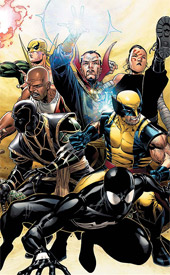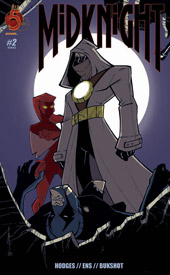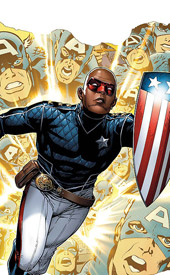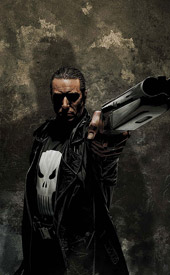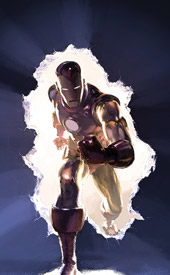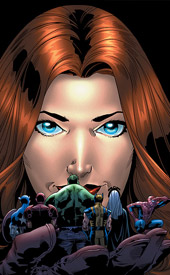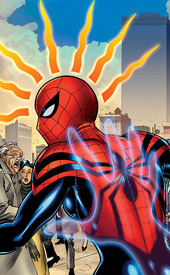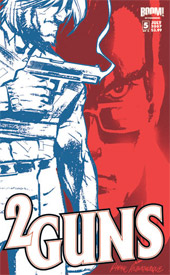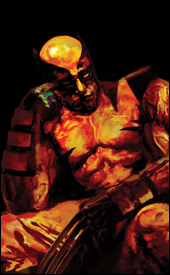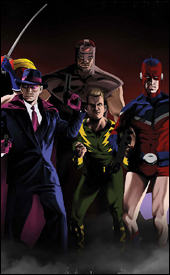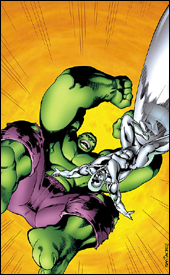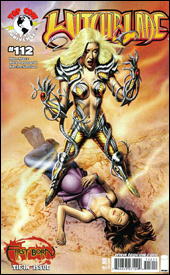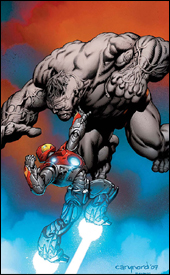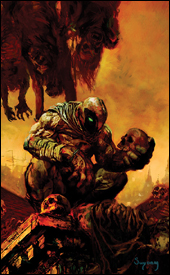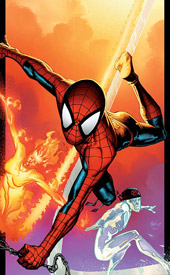
If you haven’t been following the book, what started out as a brilliant interpretation of Norman Osborn on a rampage concluded with a random firefight between the Goblin and his son Harry. When the smoke cleared, the frenzied elder Osborn had beaten his boy to death and, upon realizing what he’d done, asked SHIELD to put him down for good, a request which they obliged. That didn’t really sit well with me, and felt like a cheap way to deliver a shock where one wasn’t altogether necessary. Both Osborns were a vital part of this series from the get-go, and for them both to be written out of the storyline within two pages of each other felt like highway robbery.
Maybe Bendis understood that a lot of his readers would be thinking along those lines, because he took this issue as an opportunity to really flaunt the cast members that remain and even introduce one or two “new” faces from other books in the Ultimate line. It’s really little more than a getting to know you issue, a chance to further flesh out a series of faces that are already pretty much top-notch. After all the over-the-top theatrics of the previous story arc, an average day at school with Peter, MJ and Kitty is a welcome change of pace and a reminder that these guys are still human.
Bendis is at his best when his characters are just shooting the shit and talking through what’s bugging them, and that’s what he’s doing in this issue. And, when Iceman suddenly enters the equation, the writer continues his trend of doing more for characters borrowed from another book in a back-up role than other writers have done with them as a focal point. He’s given so much more depth to Kitty, Bobby and Johnny Storm here than they’ve ever had in their own books, that it’s almost hard to believe they’re the same people. You’d never hear Spidey, Iceman and the Torch having a conversation like the one they have on the beach in this issue in another Marvel book, and that’s what’s always made Ultimate Spider-Man a bit different from its peers.
As an ongoing artist, most titles should be so lucky as to have a regular contributor like Stuart Immonen. This is a guy who came into a tremendously difficult situation, taking over from a popular artist who’d almost become synonymous with the series, and has utterly flourished, to the point that I now actually prefer his work to Bagley’s. His artwork is picture perfect, no matter the situation – if the scene is a long, colorful conversation, then he paints the foreground to match the characters’ emotions and the background to further emphasize the situation. If it’s an action scene, he knocks it right out of the park. When Iceman drops in on Peter and MJ’s school on a Friday afternoon, the main characters may have already moved on to another topic, but in the backdrop the faceless student population rushes to marvel at the leftover ice-slide. Immonen has been flawless since his arrival, and this issue is just a continuation.
After a mild letdown last month, Bendis and company have rebounded nicely with this month’s story. He’s replaced the characters lost last month with new faces, and the book’s looking up again. Although he’s leading us into something that could be super cheesy next month, if his treatment of the subject this month is any indication, he’ll come through with flying colors. Ultimate Spider-Man remains one of my favorite ongoing reads. Buy this if you like good comic books.
Overall Score: 9.5
